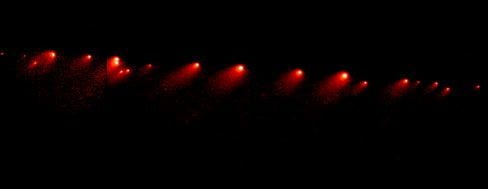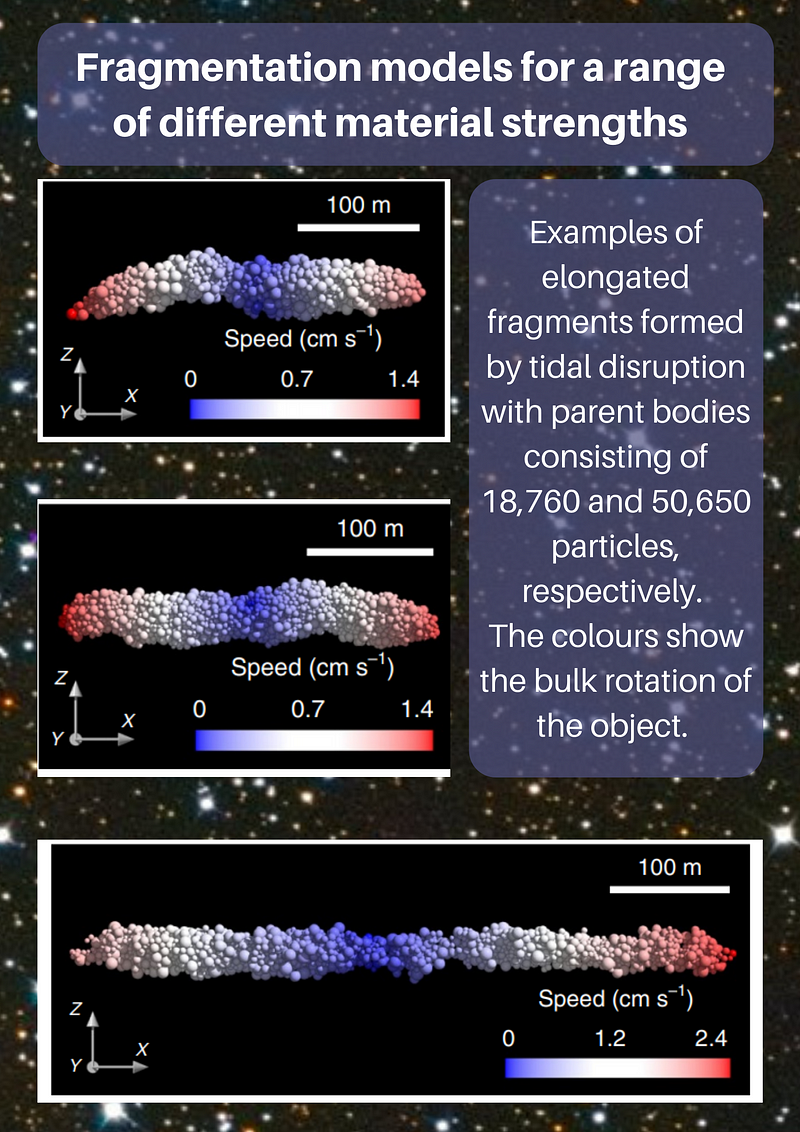Investigating the Origins of ‘Oumuamua: The Mysterious Space Cigar
Written on
Chapter 1: Introduction to ‘Oumuamua
The discovery of ‘Oumuamua, the first interstellar object observed within our solar system, has sparked significant interest in the scientific community. Found on October 19, 2017, this enigmatic visitor, officially labeled 1I/2017 U1, exhibited unexpected characteristics that puzzled astronomers. Its unusual elongated form earned it the nickname ‘space cigar,’ a feature not typically associated with asteroids or comets.
Speculation surrounded ‘Oumuamua's origins, with some suggesting it could be an alien spacecraft due to its peculiar attributes. However, the absence of unanticipated radio signals quelled those theories, leading researchers to probe deeper into its origins and formation.
Recent studies propose a more natural explanation for ‘Oumuamua's creation, indicating a fascinating process involving tidal forces.

Chapter 2: The Tidal Disruption Hypothesis
In a paper published in Nature Astronomy, researchers Yun Zhang from the National Astronomical Observatories of the Chinese Academy of Sciences and Douglas Lin from UC Santa Cruz present a compelling hypothesis. They suggest that ‘Oumuamua originated from fragments of a planetesimal that ventured too close to its star, where it was torn apart by tidal forces.
Zhang states, “It is indeed a mysterious object, but certain indicators, such as its coloration and lack of radio emissions, suggest that ‘Oumuamua is a natural phenomenon.” Their model elucidates ‘Oumuamua's distinctive cigar shape and other peculiar features.
Lin emphasizes, “Our goal is to create a comprehensive scenario grounded in established physical principles to connect all the intriguing clues.” They argue that interstellar objects similar to ‘Oumuamua can emerge from significant tidal fragmentation during close encounters with their parent stars, subsequently being ejected into interstellar space.
Matthew Knight, an astronomer and co-leader of the ‘Oumuamua International Space Science Institute team, notes, “[This study] effectively clarifies a variety of unusual characteristics of ‘Oumuamua through a unified model.”
Section 2.1: Unusual Characteristics of ‘Oumuamua
Not only is ‘Oumuamua's shape remarkable, but its behavior also defies expectations. It exhibited acceleration not attributable to gravitational forces, tumbled irregularly every few hours, and maintained a relatively low velocity—uncommon for an object expelled from a distant star system.

Researchers initially anticipated ‘Oumuamua would resemble a comet, yet observations revealed it lacked many typical cometary features, closely aligning it with asteroids characterized by dry, rocky surfaces. Notably absent was the coma—an icy cloud that envelops comets, formed by sublimating materials as they approach a star. Its lack of a coma suggests minimal sublimation, allowing it to traverse the solar system largely undetected.
The absence of this feature raises questions about the mechanism that expelled ‘Oumuamua from its home star system. Icy objects typically found in the Oort cloud are rich in volatiles and evolve far from their stars, making them susceptible to gravitational interactions.
Section 2.2: Computer Simulations of Object Formation
The research team employed computer simulations to explore how objects akin to ‘Oumuamua might form under tidal influences. Their findings indicate that when a smaller body approaches a larger one, the resulting gravitational forces can lead to fragmentation.

The case of Comet Shoemaker-Levy 9, which was disintegrated by Jupiter's tidal forces, serves as a relevant example. This tidal disruption could explain how ‘Oumuamua exited its original system.
The team’s structural dynamics model suggests that close encounters with stars can create elongated fragments. Their thermal models reveal that fragments melting near a star would then recondense at greater distances, forming a cohesive crust that stabilizes the elongated shape.

Furthermore, the peculiar tumbling motion of ‘Oumuamua may relate to its lack of sublimation and a cometary coma. The researchers propose that non-gravitational motions could arise from the outgassing of residual water—an element preserved until ‘Oumuamua's close passage to the Sun.
Zhang explains, “Heat diffusion during the tidal disruption process consumes a significant amount of volatiles, which clarifies ‘Oumuamua's surface colors and the absence of a visible coma, while also shedding light on the inferred dryness of interstellar objects.”
Chapter 3: Implications and Future Discoveries
The work by Zhang and Lin supports the theory that numerous interstellar objects like ‘Oumuamua populate the universe. Zhang elaborates, “The discovery of ‘Oumuamua suggests that the number of rocky interstellar objects is far greater than previously estimated. On average, each planetary system might eject around a hundred trillion such objects.”
They assert that their model not only elucidates the formation of a single ‘Oumuamua but also accounts for the vast population of asteroid-like interstellar entities. Lin adds, “‘Oumuamua represents just the beginning. We expect many more interstellar visitors with similar characteristics to be identified through future observations at the Vera C. Rubin Observatory.”
Most intriguingly, objects like ‘Oumuamua might carry essential building blocks for life to the habitable zones of other star systems. “This is an emerging field. These interstellar objects could provide crucial insights into the formation and evolution of planetary systems,” Zhang concludes.
Matthew Knight, an astronomer not involved in the study, remarks, “As more interstellar objects are discovered in the coming years, it will be fascinating to see if any exhibit ‘Oumuamua-like traits. This could indicate that the processes outlined in this study are widespread.”
Source
Rob is a freelance science journalist from the UK, specializing in physics, astronomy, cosmology, quantum mechanics, and obscure comic books.